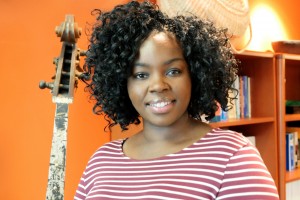A Youth Perspective
As a student, the absolute worst words a teacher can say are, “you will be working in groups.” Dreadful. I’ve learned that coalition building is different, though. While a school group is (usually) a random selection of people, a coalition is a league of people with a common interest who come together to form solutions in a specific focus area. I experienced the benefit of building a coalition on my college campus.
One night, while I was travelling as an Impresario for ARTWorks, I received a phone call from my college floor-mate. We both were living on the Harambee floor, a Defined Residential Community focusing on the African Diaspora. Eddie was upset, explaining that a hate crime had occurred: a young man wrote racially-driven death threats on the door of our fellow floor-mate. This was around the same time that the protests in Ferguson were happening, the #BlackLivesMatter movement was growing, and racial tension was spreading across the country.
In a matter of hours, over the phone and social media, I could feel the tension in the atmosphere of the campus rise, even from 1,800 miles away. Everything seemed dark and unsettling. Because I was away on the road, I felt a sense of unease and restlessness. I wanted to be there with the rest of my community, standing with them in that moment, feeling what they felt. And then it hit me: We should paint a mural! Actually, my exact words were, “They used their art to spread hate, so why don’t we use our art to spread love, awareness, inclusion, and acceptance?”
When I returned to campus, I spoke with my adviser, gathered some of my friends together, and proposed a mural project. I began asking my fellow students to assist me in my vision. As we began to build a coalition around the project, I asked what protocols were necessary to execute this vision, and as a team, we had meetings, collaborated on ideas, made flyers, and drafted an official proposal. Student artists, poets, social justice advocates, and administrators all got involved.
There were setbacks—the administration pushed back in fear of wasted resources and potential controversy. But in spite of these challenges, our coalition representative continued to meet with the administration tirelessly, we didn’t back down, and the mural is going forward with an anticipated completion date in the fall of 2015, serving as a one-year remembrance of, and response to, the hate crime we experienced.
Lessons Learned
- Be Strong
Don’t let group projects frighten you—there is strength in numbers. The involvement of a lot of people gives you confidence, energy, and courage!
- Speak Up!
As my Mom always says, “Closed mouths don’t get fed.”
- Art Heals
A collaborative art project peacefully focuses everyone’s energy and feelings around the act of creating something new.
- Art Has Power
Art can raise provocative questions. These questions are necessary. We need to question, provoke, and respond with art in today’s world.
- Coalitions Bring Surprising People Together
Don’t judge a book by its cover! You’ll be surprised by who joins you. Welcome everyone! Everyone has their specific art, their own passions, and points of view that may surprise you. You never know what friendships or connections can be sparked if you get involved.
